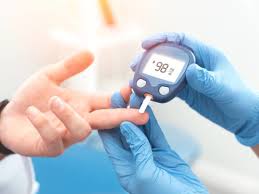Understanding Type 2 Diabetes: Causes, Symptoms, and Treatment
Type 2 diabetes is a chronic condition that affects how your body processes blood sugar (glucose). Unlike type 1 diabetes, where the body cannot produce insulin, in type 2 diabetes, the body either resists the effects of insulin or doesn’t produce enough to maintain normal blood sugar levels. This condition is becoming increasingly common, particularly in the United States, and understanding its causes, symptoms, and treatment options is crucial for prevention and management.

What is Type 2 Diabetes?
Type 2 diabetes occurs when the body either becomes resistant to insulin or doesn’t produce enough insulin. Insulin is a hormone that helps regulate blood sugar levels by allowing glucose to enter the cells to be used for energy. When insulin isn’t working properly, glucose builds up in the bloodstream, leading to high blood sugar levels. Over time, this can cause serious health complications.
Causes of Type 2 Diabetes
Several factors contribute to the development of type 2 diabetes, including:
- Genetics: If you have a family history of diabetes, you are at a higher risk of developing the condition.
- Obesity: Excess fat, particularly around the abdomen, can increase insulin resistance, leading to higher blood sugar levels.
- Lack of Physical Activity: A sedentary lifestyle can make it harder for the body to use insulin efficiently.
- Unhealthy Diet: A diet high in refined sugars, unhealthy fats, and processed foods can contribute to weight gain and insulin resistance.
- Age: People over 45 are at a higher risk of developing type 2 diabetes, but it is increasingly being diagnosed in younger adults, teenagers, and even children.
- Other Conditions: High blood pressure, high cholesterol, and gestational diabetes (diabetes during pregnancy) can increase the risk.
Symptoms of Type 2 Diabetes
In the early stages, type 2 diabetes may not cause noticeable symptoms. However, as the condition progresses, you may experience:
- Increased thirst and frequent urination
- Unexplained weight loss or gain
- Fatigue and weakness
- Blurry vision
- Slow healing of cuts and bruises
- Tingling or numbness in hands or feet
- Recurrent infections
If you notice any of these symptoms, it’s important to see a doctor for a diagnosis and appropriate treatment.
How is Type 2 Diabetes Diagnosed?
Type 2 diabetes can be diagnosed through blood tests, which may include:
- Fasting Blood Sugar Test: Measures your blood sugar after an overnight fast.
- Oral Glucose Tolerance Test (OGTT): Measures your blood sugar after fasting and then drinking a sugary solution.
- A1C Test: Provides an average blood sugar level over the past 2-3 months.
Treatment and Management of Type 2 Diabetes
While there is no cure for type 2 diabetes, it can be managed through lifestyle changes, medications, and regular monitoring of blood sugar levels.
1. Healthy Eating
Eating a balanced diet is crucial for managing diabetes. Focus on:
- Whole grains, lean proteins, healthy fats (like avocado and olive oil), and fiber-rich vegetables.
- Avoid sugary drinks and foods with a high glycemic index, which can cause rapid spikes in blood sugar.
2. Regular Exercise
Physical activity helps the body use insulin more effectively and can aid in weight loss. Aim for at least 150 minutes of moderate-intensity exercise per week, such as brisk walking, cycling, or swimming.
3. Medications
If lifestyle changes alone aren’t enough to control blood sugar, your doctor may prescribe medications, including:
- Metformin: Helps lower glucose production in the liver.
- Sulfonylureas: Stimulate the pancreas to produce more insulin.
- GLP-1 agonists: Help regulate blood sugar and promote weight loss.
- SGLT2 inhibitors: Help the kidneys remove excess glucose from the bloodstream.
4. Monitoring Blood Sugar
Regular monitoring of blood sugar levels is key to managing type 2 diabetes. This can be done at home with a blood glucose meter or continuously with a CGM (Continuous Glucose Monitor).
5. Weight Loss
For overweight individuals, losing even a small amount of weight can significantly improve insulin sensitivity and blood sugar control.
Complications of Type 2 Diabetes
If left untreated or poorly managed, type 2 diabetes can lead to serious complications, such as:
- Heart disease and stroke
- Kidney damage (diabetic nephropathy)
- Nerve damage (neuropathy)
- Vision problems (diabetic retinopathy)
- Poor circulation and increased risk of infection, especially in the feet
Preventing Type 2 Diabetes
Preventing type 2 diabetes involves making healthy lifestyle choices, including:
- Maintaining a healthy weight
- Eating a balanced, nutritious diet
- Exercising regularly
- Monitoring blood sugar levels, especially if you are at high risk
If you have prediabetes (higher-than-normal blood sugar levels but not yet in the diabetic range), you can reduce your risk by making these lifestyle changes, which may help prevent the onset of type 2 diabetes.

Publicar comentário